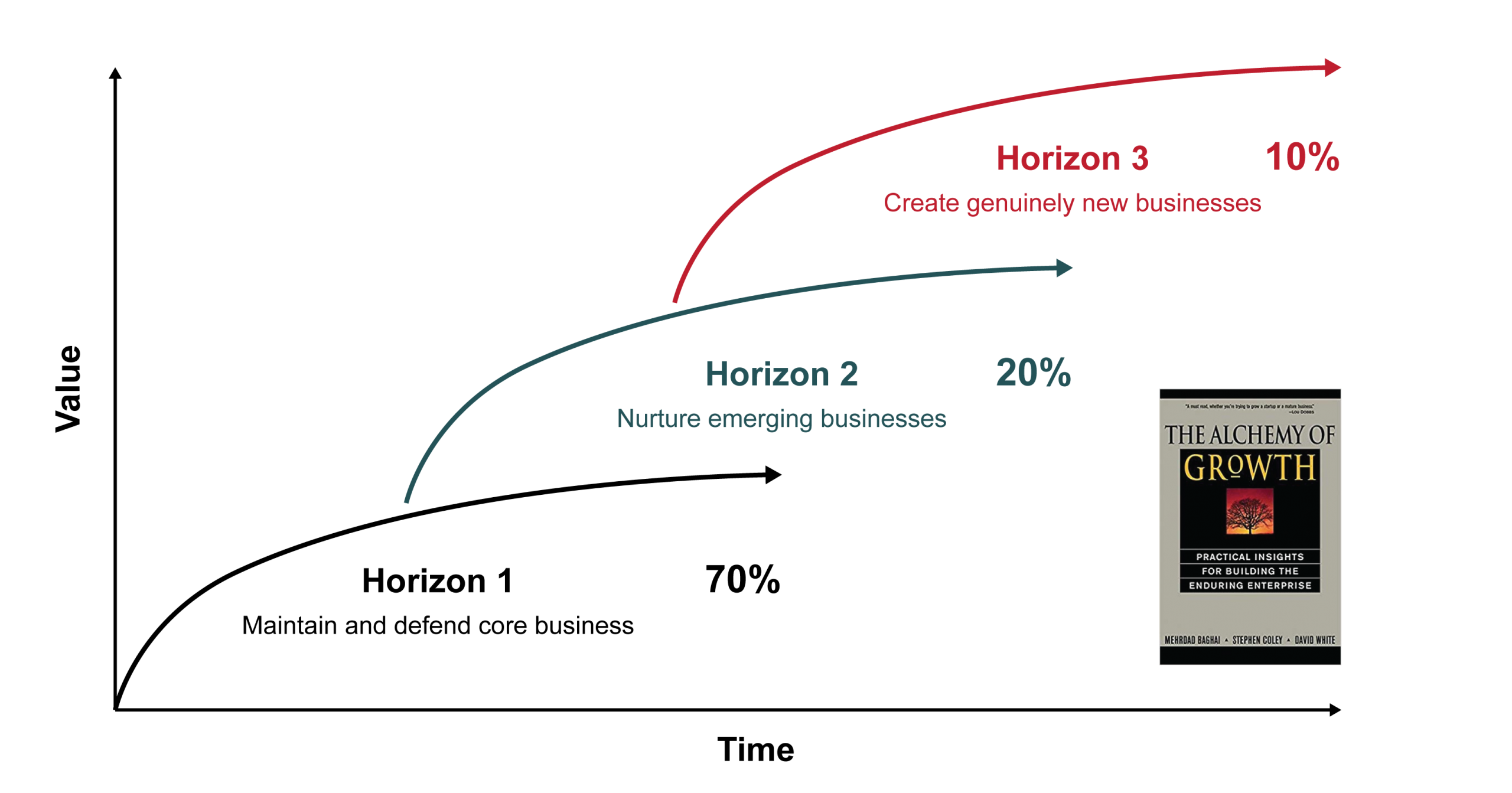
Innovation needs to pay
Part of the mission of many technology companies is to pursue innovation – it’s a great message to their customers, an enticement to new employees and a key tool to differentiate in crowded markets.
But if it’s uncontrolled, there’s a risk of spending lots of money on expensive innovations, few of which actually pay back their investment.
We came across one company with a mantra for innovation – a sacred belief that innovation was the answer to all their problems. Over 80% of their profit was generated by 10 of their 500 products. That’s a lot of innovation investment that’s been wasted!
It doesn’t matter whether you’re selling to businesses or consumers or if your clients are internal colleagues or governments – this challenge to deliver payback needs to be tackled.
What is innovation?
So, what do we mean by innovation and how can we get it under control without stifling its opportunities?
For many of us, the first thing that comes to mind when we think about innovation is famous examples such as, the iPod, iPhone, and iPad from Apple, the Uber business model, or Tesla with its driver-assist battery cars. These are examples of disruptive innovations that shook up people’s thinking about what was possible in a market.
Others might think of innovations that are being talked about but have yet to prove themselves such as 3D bioprinting, quantum computing, and brain-computer interfaces.
But not every innovation is so grandiose. Innovation in its broadest definition is about coming up with new and better ways of doing something. It could be as simple as a new feature or a new way of presenting something.
It’s the nature of most product people to want to be curious about their products, about what they can do to make it more valued by more customers, how they could improve the experience, or make it more profitable.
So, innovation should be part of our job.
Left to product people however, there’s a chance that innovation never happens because we’re so swamped by day-to-day issues.
Ensuring Innovation happens
So, how can we recognize the value of long-term thinking about innovation and not just the shorter-term tactical improvements?
One way that works is to consider targeting people on different time horizons.
To illustrate different stages of innovation, McKinsey developed it’s 3 horizons model. Its purpose is to ensure innovation happens.
- Horizon 1 is about maintaining and defending the core business (they recommend around 70% of investment goes here)
- Horizon 2 is about nurturing emerging business (around 20% of investment goes here)
- Horizon 3 is about creating genuinely new business – these are your moon-shots, big risky exciting bets for the future (around 10% of investment goes here)
This model is typically applied at a company strategic level, but we believe it can also be used at a product level e.g., as a roadmap approach with Horizon 1 becoming “Now”, Horizon 2 “Next” and Horizon 3 “Future”.
An individual, or a single team, will struggle to span all horizons – the pressure to deliver wins in the short-term (in Horizon 1) means that Horizons 2 & 3 will get neglected.
So, it’s likely that Horizon 2 and Horizon 3 will be the responsibility of a different individual or perhaps a specialist ‘Innovation team’. It might even be a separate business run independently from the core business, so their thinking isn’t constrained by core business objectives, timelines, and governance. In bigger companies, this team may also be tasked with looking for companies to acquire who already have market experience or products in the area of interest.
If the business isn’t big enough to justify a separate team, then it might be that a product person works on Horizon 1 most of their time but has 1 or 2 days a week focused on one of the longer-term horizons.
Balancing investment across the timelines ensures that innovation happens in a company.
How do we get individual product people to take innovation seriously? By enabling their creativity and setting personal objectives that require forward-thinking. You might, for example, require them to present every quarter on their view of future opportunities and options.
Turning innovation into product
It would be great to think every innovation is a winner. The reality is that even those innovations that some customers value don’t always scale well – the prototype (or idea) may prove itself, but can it be delivered at a profit for many customers and not just those initial enthusiasts?
There are several stages that any great idea will go through on its journey to becoming a great product:
- Discovery: Exploring the market to find the idea – the customer problem worth solving and matching this with a solution that works
- Validation: Building the initial prototype and testing for product-market fit to validate it works and get market feedback
- Productizing: Defining and standardizing what’s built and how it’s sold, ordered, delivered and supported so it can be delivered reliably at scale (i.e., it’s productized)
- In-life evolution: Evolving the solution to grow market share, revenue, and profit (or whichever combination makes sense for the maturity of the product and for the business – see more below)
- In-life cost management: Reducing ongoing year on year costs so deliveries are profitable (and still valued by customers).
For many product people, stages 1 and 2 are the exciting activities – holding focus groups with customers and internal colleagues on where future challenges and opportunities lie is a fun thing to do. Knocking up prototypes, maybe in a Google Sprint, to validate our riskiest assumptions about an idea gives everyone a buzz.
But stages 3, 4 and 5, when products are created and optimized, are the activities where product people earn their salaries. These are the activities that deliver profitable revenue to the organization.
We’re not saying that 1 and 2 aren’t important but without 3, 4 and 5 time and money invested in creating and validating ideas are wasted.
The deliverable output of stage 2, product validation, might be a Minimum Viable Product. We’ve talked about challenges with MVPs in other blogs , and here, so we won’t repeat the challenges here.
These stages are very similar to the steps a start-up typically goes through to get to a sustainable business model. If you haven’t read it take a look at The Lean Start-up by Eric Riess.
Conclusion
Product innovation, regardless of whether it delivers major new ideas or minor enhancements, is a key activity for any business looking to differentiate itself.
It’s part of the job of everyone in product management.
So, keep curious to identify what you can do to help customers do the things they value. And if you manage a team, task your people to come up with a forward-looking view for their product domain.
Andrew Dickenson
Product Focus Founding Director



Join the conversation - 1 reply
Very useful advice in this post. A lot to use in my day to day interaction with clients. I love the McKinsey 3 Horizon model. I use it to stage my clients product backlog. Great blog.